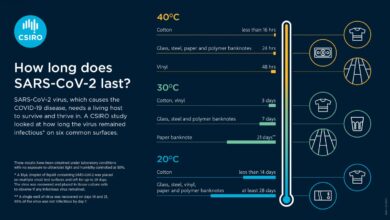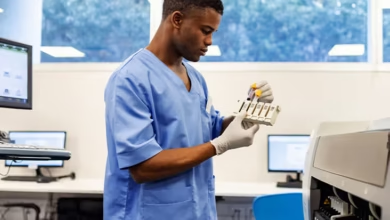Who Developed the Rabies Vaccine: A Breakthrough in Medical Science

developed the rabies vaccine The development of vaccines has been one of the most remarkable achievements in medical history, and among these, the rabies vaccine stands as a significant milestone. Understanding its origin and the scientific journey that led to its creation not only highlights human ingenuity but also reminds us of the critical role vaccines play in combating deadly diseases. Let’s explore the story behind the rabies vaccine, its development, and its impact on global health.
The Origins of Rabies and the Need for a Vaccine

Rabies is a viral disease that affects the central nervous system and is developed the rabies vaccine almost always fatal once symptoms appear. For centuries, it instilled fear in humans and animals alike, with no effective treatment available. The disease is transmitted primarily through the bite of an infected animal, and its symptoms include fever, hallucinations, and hydrophobia (fear of water).
Before the vaccine’s development, efforts to combat rabies were rudimentary. Quarantining animals and isolating bitten individuals were common practices, but these measures were far from effective. The disease’s high mortality rate demanded a more robust solution.
By the 19th century, advancements in microbiology and immunology provided developed the rabies vaccine hope. Scientists began to understand infectious diseases better, paving the way for innovative treatments. The stage was set for the development of the rabies vaccine, and one name would soon emerge as a pioneer in this effort: Louis Pasteur.
Louis Pasteur: The Visionary Behind the Rabies Vaccine
Louis Pasteur, a French chemist and microbiologist, is developed the rabies vaccine widely credited with developing the first successful rabies vaccine. Pasteur’s contributions to science extended far beyond rabies; he’s also known for his developed the rabies vaccine work on pasteurization, germ theory, and vaccines for other diseases like anthrax.
Pasteur began his work on the rabies vaccine in the 1880s. He was inspired by his earlier success with the anthrax vaccine and believed that similar principles could be applied to rabies. At the time, rabies’ cause was unknown, as the rabies virus was too small to be seen under microscopes developed the rabies vaccine of the era. However, Pasteur hypothesized that the disease was caused by a microorganism and set out to find a way to neutralize it.
Through developed the rabies vaccine meticulous developed the rabies vaccine experimentation, Pasteur discovered that the rabies virus could be weakened, or attenuated, by drying infected animal spinal cords. By introducing this weakened virus into a healthy animal, he observed that the animal developed immunity to rabies. This breakthrough formed the basis of the rabies vaccine.
The First Human Trials: A Leap of Faith
Developing a vaccine is one thing, but proving its efficacy in humans is developed the rabies vaccine developed the rabies vaccine another challenge altogether. Pasteur faced immense pressure to demonstrate that his rabies vaccine worked, but testing it on humans was fraught with ethical and scientific uncertainties.
The opportunity for a human trial came in July 1885, when a young boy named Joseph Meister was bitten by a rabid dog. With no other options available, Meister’s family turned to Pasteur for help. Pasteur, though hesitant, administered a series of injections containing the attenuated rabies virus. Over several weeks, Meister showed no signs of rabies and eventually recovered completely.
This success marked the first documented use of the rabies vaccine in a human and cemented Pasteur’s legacy in medical history. The triumph not only saved Meister’s life but also provided proof that vaccines could effectively combat deadly diseases in humans.
The Impact of the Rabies Vaccine
The introduction of the rabies vaccine revolutionized public health and set a precedent for future vaccine development. In the years following Pasteur’s breakthrough, the vaccine was refined and distributed widely, significantly reducing rabies-related deaths worldwide.
One of the most significant outcomes of Pasteur’s work was the establishment of the Pasteur Institute in 1887. This research center became a hub for scientific innovation and vaccine development, contributing to advances in combating various infectious diseases. Today, the Pasteur Institute remains at the forefront of biomedical research.
The rabies vaccine’s success also highlighted the importance of collaboration between scientists, governments, and healthcare providers. Mass vaccination campaigns, combined with public awareness efforts, have made rabies a preventable disease in many parts of the world. However, challenges remain in eradicating rabies completely, especially in low-income regions where access to vaccines is limited.
Modern Rabies Prevention: Continuing Pasteur’s Legacy
While Pasteur’s original rabies vaccine laid the foundation, modern advancements have made the vaccine safer and more effective. Today’s rabies vaccines are typically produced using cell cultures, ensuring higher purity and fewer side effects.
In addition to vaccines, post-exposure prophylaxis (PEP) has become a critical tool in rabies prevention. PEP involves a combination of wound cleaning, rabies immunoglobulin, and a series of vaccine doses to prevent the virus from spreading in someone exposed to rabies. This approach has saved countless lives and underscores the importance of timely medical intervention.
Efforts to eliminate rabies now focus on vaccinating domestic animals, particularly dogs, which are responsible for the majority of human rabies cases. Organizations like the World Health Organization (WHO) and the Global Alliance for Rabies Control are working tirelessly to provide vaccines and resources to underserved communities.
Conclusion: A Legacy of Hope and Innovation
The development of the rabies vaccine by Louis Pasteur is a testament to human ingenuity and determination in the face of seemingly insurmountable challenges. From its humble beginnings in Pasteur’s laboratory to its global impact today, the rabies vaccine has saved millions of lives and continues to inspire advancements in medical science.
As we reflect on Pasteur’s groundbreaking work, it’s crucial to recognize the ongoing efforts to make vaccines accessible to all. The fight against rabies serves as a powerful reminder of what can be achieved when science, innovation, and compassion come together for the greater good.



